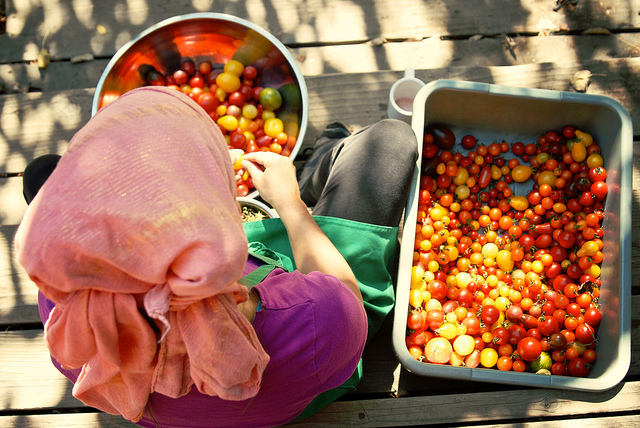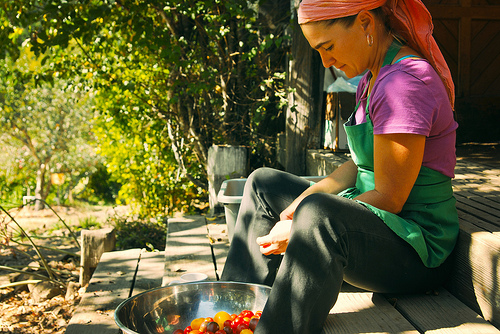OAEC Cookbook Co-Author Olivia Rathbone on growing a farm-to-table garden for the home gardener:
North Bay Woman (NBW)*: What does a good farm-to-table garden include?
Rathbone: A diverse garden with a good mix of perennials and annuals means you have lots of options, and back-up, if you lose a crop to frost or pests. It would include a solid and diverse base of culinary herbs, perennial crops and workhorse annuals for daily use. Plant a patch of perennial herbs and garnishes like thyme, rosemary and lemon verbena in front of your house or even in a small pot in the window of your kitchen.
NBW: What about annuals?
Rathbone: Plant some self-seeding ones like parsley and cilantro. Let them go to seed so they come up on their own. Easy-to-grow edible flowers like calendula, Johnny jump-ups and nasturtiums bring in pollinators, add grace and beauty to the garden and plate. Add sweet flowers, like rose petals, to glasses of water as dessert decorations.
NBW: What’s the best way to coordinate the kitchen and the garden?
 Rathbone: Learning the rhythms of the seasons and the crops is one of the great joys of gardening. Rather than having a rigid idea about what you are going to serve, go to the garden and let it decide what you are going to cook. But remember, you don’t have to grow it all. The goal of the good food movement is interdependence, not independence.
Rathbone: Learning the rhythms of the seasons and the crops is one of the great joys of gardening. Rather than having a rigid idea about what you are going to serve, go to the garden and let it decide what you are going to cook. But remember, you don’t have to grow it all. The goal of the good food movement is interdependence, not independence.
NBW: Planning is essential to this type of garden. What do you suggest?
Rathbone: For short turn-around crops like basil, lettuce and radishes, do multiple plantings in succession throughout the season. In other words, if you only plant one round of basil at the same time as you put your tomatoes in in May, the basil will be long gone by the time your tomatoes are ripe. Plant another round of basil in July and you can have that caprese salad you had hoped for. Also, plant your fall/winter garden early in August when the soil is still warm. Chard, brassicas and chicories will continue to produce abundant food throughout the fall and winter for Thanksgiving and holiday parties. Then, when it comes to growing food for a gathering, you can scale up certain favorite crops to feed a crowd.
Read more from North Bay Woman >
*Interview by P.J. Bremier






